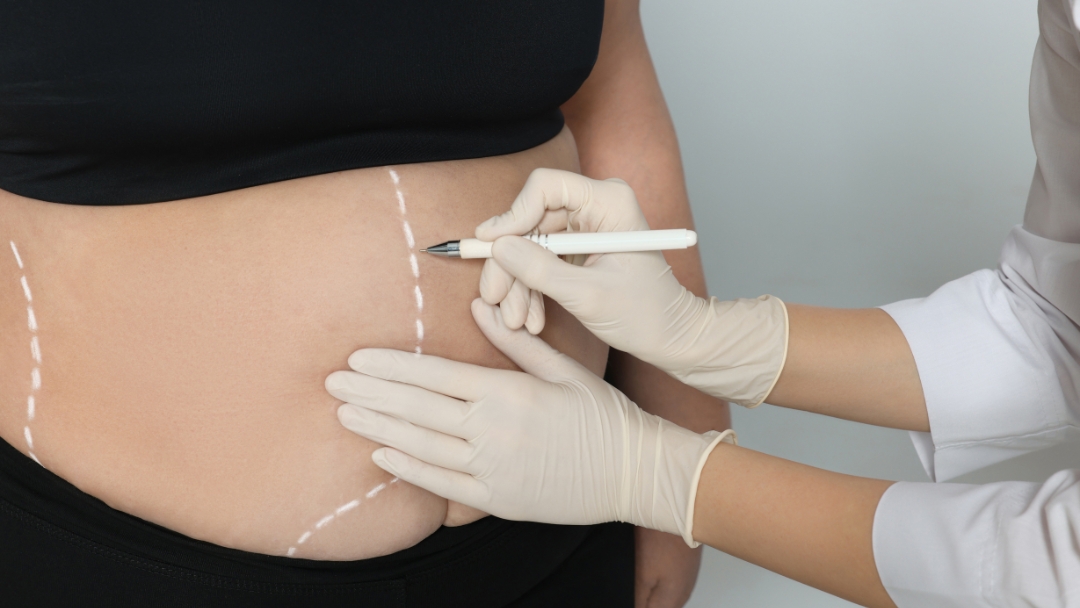Liposuction is the most popular procedure in fat removal, with the power to instantly get rid of isolated pockets of unwanted fat. In the hands of a qualified professional, liposuction can be used to completely reshape the body, offering patients life-changing results. Although today’s liposuction techniques are much less invasive than earlier versions, all forms of liposuction are surgical procedures and as such can leave scars. Simply put, there is no such thing as liposuction without scars. Fortunately, many liposuction patients are left with small scars that are nearly invisible to the naked eye. If you are considering this treatment but have concerns about whether liposuction will leave scars, here is everything you need to know.
Characteristics of liposuction leaves scars
Any procedure that requires incisions can leave some type of scar. Fortunately, that doesn’t mean that the resulting scar is always visible to the naked eye. With the intervention of an experienced surgeon like Anne-Sophie Lessard and following the postoperative instructions to the letter, the scars derived from the liposuction procedure will not be visible to others. The amount of scarring a patient may experience after liposuction depends on several factors.
All liposuction procedures require the making of a small incision into which the cannula is inserted. These incisions are usually very small and are sometimes made with an awl instead of a scalpel. The smaller the incision, the smaller the scars liposuction leaves.
The location where the incision is made is also very important. An expert surgeon will perform the procedure with minimal incisions, placed in imperceptible areas. Depending on the area to be treated, the incisions can be placed below the bikini line, at the navel or at the back of the waist. Additionally, skillful technique minimizes cell damage at the incision site.
Additionally, the physical conditions of the patient are also determining factors. Some people, due to their age or genetics, heal more easily than others. If you have a history of developing keloid scars, you risk making the scars more visible after liposuction. Keloid scars occur when the body produces too much collagen in response to injury. These scars are raised and appear much darker than the surrounding skin. Although keloid scars are not common after liposuction, you should tell your doctor if you have had keloid scars in the past.
After your liposuction surgery, you will be sent home with instructions on the best care of your incision areas. Failure to follow these instructions can lead to infection and is a common cause of scarring. A combination of genetics and/or lack of incision care can also lead to discoloration. Sun exposure, for example, can cause pigmentation, when the scar is darker than the surrounding skin, or vice versa, lighter.
Recovering from scars
Immediately after your liposuction procedure, the incision sites will be more prominent. As these scars heal, they will first form scabs, which then heal and turn into red or pink skin. Within 6 to 12 months, these scars will fade, blending in with the surrounding skin and becoming much less visible. If visible scars remain, they can be the size of a freckle and easily covered by a bathing suit or clothing.
Tips on how liposuction leaves less visible scars
Scars are the result of the body’s natural healing process. After injury or surgery, the body responds by producing collagen and fibrous tissue that intertwine to form scar tissue. However, there are some ways to help the body minimize the appearance of scars. The most important thing is to follow the post-operative instructions of the specialists such as wearing compression garments as directed and a medical grade silicone healing gel. Keep all your follow-up appointments so you don’t take unnecessary risks.
In the rare case that liposuction leaves visible scars after your incisions is completely healed, there are treatments available to treat post-surgical scars. Silicone gel sheets are a home treatment option that minimizes the appearance of scarring in some cases. This relatively cheap and easy-to-use treatment is a good first option to try. A chemical peel exfoliates the top layers of the skin, which can remove scar tissue. A dermatologist can offer a deeper, stronger exfoliation.
Microdermabrasion is a manual exfoliation method that can remove scar tissue and also trigger collagen production for smoother skin. There is also laser therapy, which uses heat to break up keloid scars and stimulate the growth of new skin cells. This method usually requires multiple sessions.
Other options include cryotherapy, which targets keloid scars by freezing them with nitrogen gas. This quick and easy method removes scar tissue, which will then scab over and heal, leaving a smaller scar. Lastly, scar revision surgery, or scar removal surgery, is an option for more severe and visible scars. The surgical procedure removes the scar, leaving a smaller one.
As you can see, liposuction in Miami leaves scars but these can be more or less important depending on several factors. To obtain more information and consult about your particular case, do not hesitate to book an appointment with Dr. Sophie, a specialist in the field.


Leave a Reply